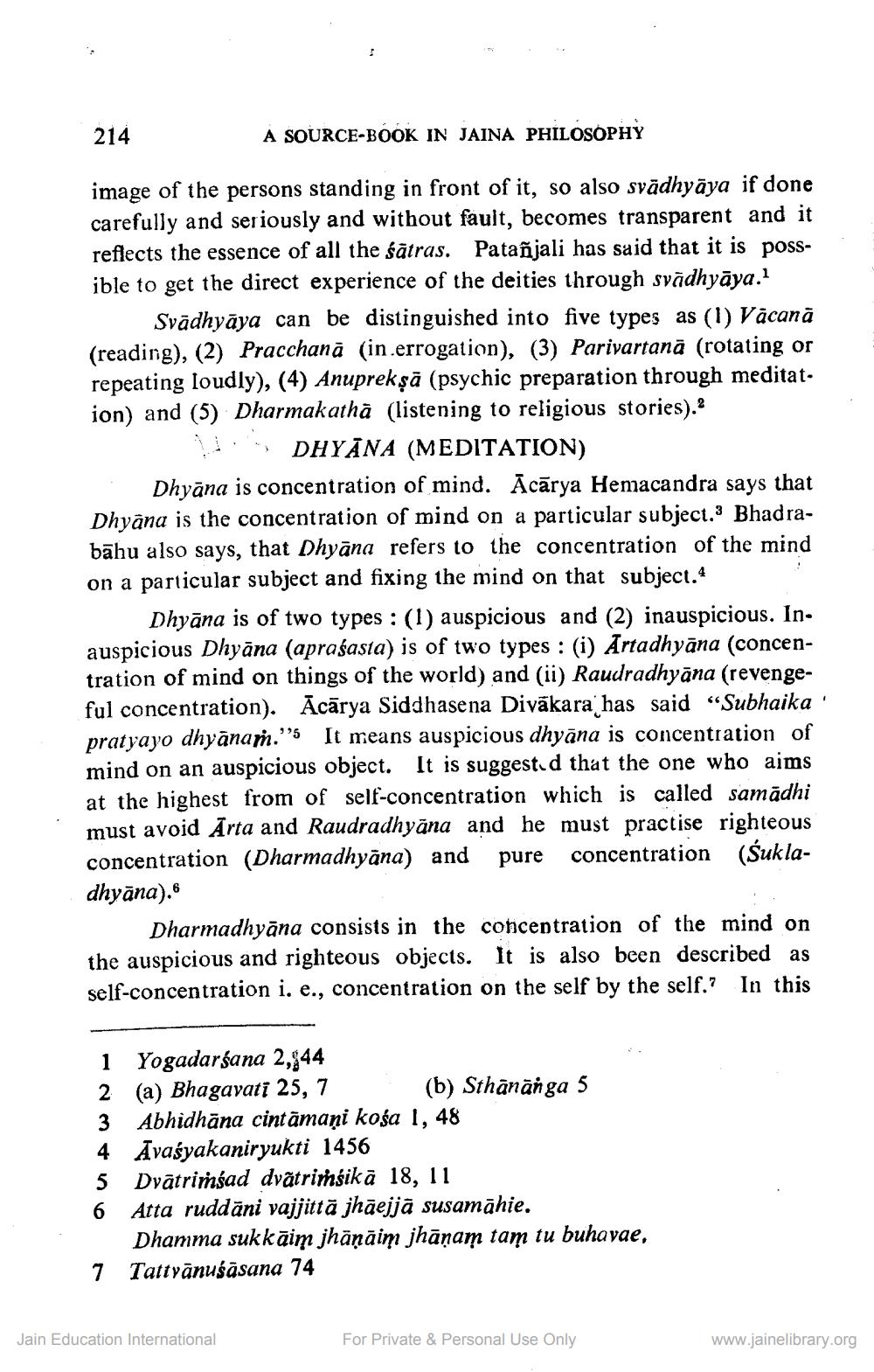________________
214
A SOURCE-BOOK IN JAINA PHILOSOPHY
:
image of the persons standing in front of it, so also svādhyāya if done carefully and seriously and without fault, becomes transparent and it reflects the essence of all the śātras. Patañjali has said that it is possible to get the direct experience of the deities through svādhyāya.
Svādhyāya can be distinguished into five types as (1) Vacanā (reading), (2) Pracchanā (in.errogation), (3) Parivartanā (rotating or repeating loudly), (4) Anuprekşā (psychic preparation through meditat. ion) and (5) Dharmakathā (listening to religious stories).
I DHYĀNA (MEDITATION) Dhyāna is concentration of mind. Ācārya Hemacandra says that Dhyana is the concentration of mind on a particular subject. Bhadrabāhu also says, that Dhyāna refers to the concentration of the mind on a particular subject and fixing the mind on that subject.4
Dhyāna is of two types : (1) auspicious and (2) inauspicious. Inauspicious Dhyāna (aprašasta) is of two types : (i) Artadhyāna (concentration of mind on things of the world) and (ii) Raudradhyāna (revengeful concentration). Acārya Siddhasena Divākara has said “Subhaika' pratyayo dhyānań." It means auspicious dhyāna is concentration of mind on an auspicious object. It is suggested that the one who aims at the highest from of self-concentration which is called samādhi must avoid Ārta and Raudradhyāna and he must practise righteous concentration (Dharmadhyāna) and pure concentration (Sukladhyāna).6
Dharmadhyāna consists in the concentration of the mind on the auspicious and righteous objects. It is also been described as self-concentration i. e., concentration on the self by the self.? In this
"Subject.
1 Yogadarśana 2,944 2 (a) Bhagavati 25, 7 (b) Sthânānga 5 3 Abhidhāna cintamaņi kośa 1, 48 4 Avaśyakaniryukti 1456 5 Dvātrimsad dvātrimśikā 18, 11 6 Atta ruddāni vajjittā jhāejjā susamāhie.
Dhamma sukkāim jhāņāim jhāņam tam tu buhavae, 7 Tattvānušāsana 74
Jain Education International
For Private & Personal Use Only
www.jainelibrary.org




